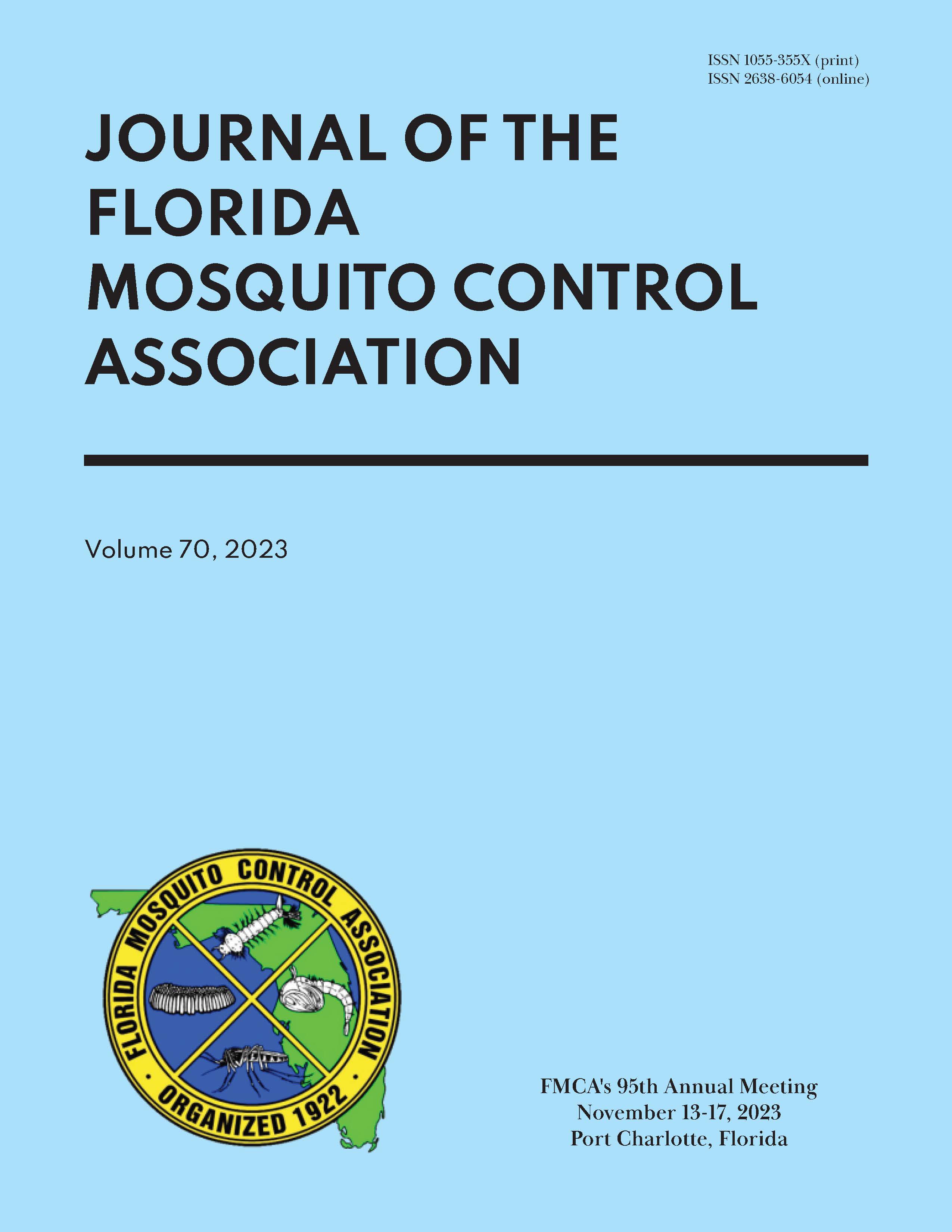FIELD EVALUATION OF AUTOCIDAL GRAVID OVITRAP AND SIRENIX TRAP AGAINST CONTAINER INHABITING MOSQUITOES IN SAINT AUGUSTINE, NORTHEASTERN FLORIDA
DOI:
https://doi.org/10.32473/jfmca.70.1.133840Schlagworte:
Aedes aegypti, Aedes albopictus, Autocidal Gravid Ovitraps, Sirenix traps, population reductionAbstract
Mosquito control programs are utilizing cost-effective long-term autocidal traps targeting the gravid population of container-inhabiting and other mosquito species, with the aim of reducing vector populations and disease transmission risk. In this field study we directly compared the efficacy of two autocidal trap types-the Autocidal Gravid Ovitrap (AGO) and SIRENIX mosquito trap in reducing mosquito abundances in St. Augustine, Florida to a control only site that had no autocidal traps deployed. Pre-treatment (wk1-4) and post-treatment (wk 5-14) adult mosquitoes were captured in all three sites using BG traps baited with BG lure and dry ice. Pre- and post-treatment trap counts of Aedes aegypti, Aedes albopictus, Culex quinquefasciatus, and total mosquitoes (three species together) were compared to determine significant changes in abundance. Percent reduction in abundance of each species/group at the two trap sites were calculated to evaluate the trap efficacy at controlling Aedes and Culex container mosquitoes. Aedes albopictus populations were significantly reduced (86.6%) at the SIRENIX site compared to the populations at the AGO site (67.7% reduction). Ae. aegypti populations were reduced by 72.4% at the SIRENIX site compared to 25% at the AGO site. Culex quinquefasciatus population reduction at the SIRENIX site was 59.6% compared to 11.8% at the AGO site. The total mosquito group had only 45.1% and 10.3% reduction at the SIRENIX and AGO sites, respectively. Furthers studies conducted across the entire mosquito season would be required for full understanding of the effectiveness of these traps.

